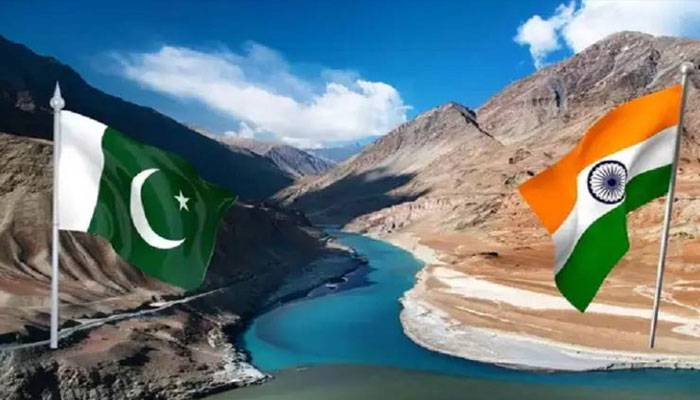Published: 07:26 PM, 03 October 2025
India-Pak War Brewing? Sir Creek Dispute and the Expanding India-Pakistan Strategic Theatre

Sangram Datta:
India and Pakistan’s volatile relationship has entered another delicate phase following Defence Minister Rajnath Singh’s stern warning to Islamabad over territorial aggression in Sir Creek.
On 3 October 2025, Singh declared that any attempt by Pakistan to alter the territorial status quo would invite a response that could change “history and geography.”
The warning comes in the aftermath of Operation Sindoor earlier this year—the first full-scale armed clash between India and Pakistan since 1971. The latest flare-up around Sir Creek signals a widening of potential theatres of conflict between the two nuclear-armed neighbors.
Indian media outlet NDTV on the same day headlined: “India-Pak Sir Creek Border Dispute And Its Strategic Importance.” This reflects how the issue has moved from obscurity to the forefront of South Asian geopolitics.
What is Sir Creek?
Sir Creek is a 96-km tidal estuary in the marshy expanse of the Rann of Kutch, marking the westernmost boundary between India’s Gujarat and Pakistan’s Sindh province.
India’s Position: The boundary follows the mid-channel (Thalweg principle), using the deepest navigable channel as the dividing line.
Pakistan’s Position: The border lies along the eastern bank, citing a 1914 agreement between the Rao of Kutch and the Sindh government.
The dispute is rooted in conflicting colonial-era documents and the contested question of whether Sir Creek qualifies as a navigable waterway.
Why Sir Creek Matters:
1. Military Significance
For India, control of Sir Creek shields Gujarat’s coastline and provides a potential strike corridor toward Karachi Port, Pakistan’s economic and naval hub.
For Pakistan, expanded control opens a third axis of pressure on India—alongside Kashmir and the Punjab-Rajasthan frontier—while extending its surveillance reach over the Arabian Sea. Recent reports of Pakistani bunkers, radars, and drone-capable forward bases highlight a creeping militarization.
2. Economic Stakes
Fishing Grounds: Among Asia’s richest fishing areas, sustaining thousands of families on both sides.
Energy Resources: Potential untapped oil and gas reserves, stalled by the dispute. Pakistan has courted external partners, including the US, to exploit offshore blocks, while India sees securing these reserves as critical to energy diversification beyond Russian imports.
3. Terrorism and Infiltration Risks
Sir Creek’s marshy terrain has long provided cover for unconventional operations. In 2019, abandoned boats and intelligence of Pakistan-trained underwater operatives triggered red alerts along India’s western coast. The region’s geography makes it a launchpad for infiltration and asymmetric warfare.
The Shadow of Operation Sindoor
The specter of Operation Sindoor looms large. That limited but intense conflict marked a shift from sporadic skirmishes to open warfare. India’s doctrine of swift punitive retaliation, once confined to Kashmir, now extends to Gujarat’s coastal frontier.
If Pakistan pursues a multi-front pressure strategy, it risks overextending its forces and inviting disproportionate retaliation from India.
Regional and Global Implications:
1. Escalation Risks: Miscalculation in Sir Creek could spiral into a multi-domain war—land, air, and maritime.
2. Maritime Security: Arabian Sea trade routes, vital to global commerce, could be disrupted.
3. Energy Politics: Oil and gas exploration in contested waters adds a layer of international competition.
4. China Factor: With CPEC’s proximity to Sindh and Balochistan coasts, Beijing has direct stakes in stability—or instability—in the Sir Creek corridor.
Conclusion:
Once dismissed as a minor cartographic quarrel, Sir Creek has re-emerged as a strategic flashpoint. For India, holding firm in Gujarat secures its territory and deters Pakistan’s maritime ambitions. For Pakistan, a misstep here risks provoking a conflict that could redraw maps—an outcome Defence Minister Singh bluntly warned against.
As military infrastructure expands and great-power rivalries intersect, Sir Creek may no longer remain a “forgotten creek.” Instead, it could become the epicenter of the next great test in the India-Pakistan rivalry—one with consequences far beyond South Asia.




